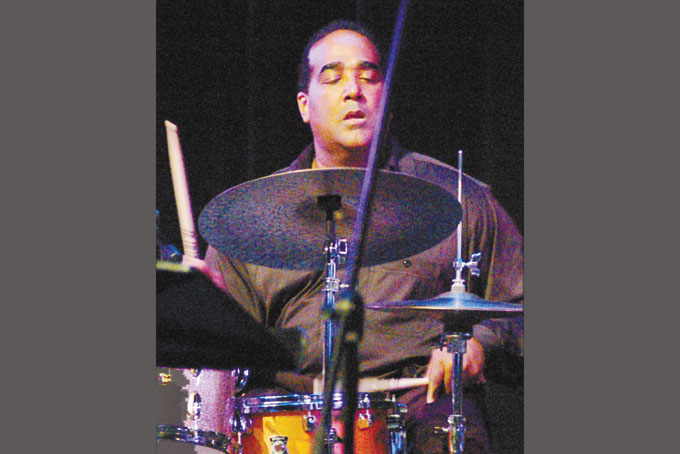
CECIL BROOKS
(Pittsburgh’s funky R & B legacy Part 2 )
Regional private social clubs vital to live
music scene
The Beaver Falls Elks, like other regional private social clubs, were hotspots for Black party life in the late sixties and early 1970s—a trend that would continue well into the mid-1980s.
Long before the advent and rise of Disco music and its pulsating, high-tech Disco Clubs, small private clubs provided the dance track for Black Pittsburgh—way before Disco havens like Monroeville’s Backstage Lounge, Holiday House, East Liberty’s Fantastic Plastic and Yellow Banana set the standard with elaborate lighting systems and booming sound systems that eclipsed any live band’s self-contained sound system.
Other hotspot Disco clubs of that period were the VIP 2001 on the North Side and in Baden, and the renovated movie theater known as Infinity Disco in Rochester. The positive aspects of these new Disco clubs were that they were the first party spots to become fully racially-integrated—as opposed to the previous defacto segregated nightclubs and bars that were typically located in individual neighborhoods that were “expectedly” racially segregated, generally with more Whites versus Black patrons.
Joining the Beaver Falls Elks as venues where Black folks “did their own thing,” were soulful party spots like Clairton’s Hollywood Club, the Rankin Elks and Homestead’s Workingmen’s Club, The MPI and Quippian Clubs in Aliquippa, the Sewickley Legion and the Paramount Club in Coraopolis.
The ambiance at those clubs during the early ‘70s were the same—kind of like watching the party scene in the classic 1972 motion picture “Superfly,” when Ron O’Neil’s character, Preach, stopped to have a few drinks at a bar while Curtis Mayfield’s hot and funky live band played groovy sounds.
Cool cats wearing colorful satin suits, Stetson shoes and Apple caps to match, found themselves in a room full of fine sisters wearing Afro hair-doos, tight mini skirts, hot pants and platform shoes.
“Ah yea, those were the days,” reflects Phillip Billingslea, a former Pittsburgh regional radio industry executive at Sheridan Broadcasting.
Back in the day, Billingslea, an Aliquippa native, spent lots of time surveying the city’s social scene and was one to travel throughout the Tri-State area during his younger years.
When it comes to the importance of the band era of the ‘70s, Billingslea puts it all in perspective.
“Really, it was a great time. A great era. It was hot while it lasted, but then it was gone in a flash,” he said.
“The bands were strong then, we had El Pooks and they had a record called “Psychadelic Soul.”
El Pooks were a family unit later renamed The Stringfield Family Band.
Billingslea also reflects on the importance of nearby Ohio bands like TNT Flashers and East Coast, both hailing from Steubenville.
He counts the Rainbow Room in Beaver Falls and the Midland Elks as other hot spots that should be noted in this historical account.
Other notable clubs according to Billingslea were Club 25 in East Liverpool, Ohio, The Inferno on the main street and the Paramount Club in Coraopolis where he saw The Dramatics perform.
Billingslea also credits his hometown for producing several of the premier funk musicians of Western Pa., namely the Rare Experience group. “They featured an all-star lineup, even way back then,” he said. He includes the following musicians: George Tyson, Gary Washington, brothers Maurice and Michael Jones, Allen Smith, Lateef, Rodney “Bogey” Burrow and Reggie “The Wizard” Jones.
“Wizard” Jones is currently a major force in Atlanta, where he’s contracted to conduct and arrange for many major music industry shows. He has served as music director for various TV specials. Jones also serves as Musical Director for many of the hottest performing acts from Atlanta, New York, Los Angeles and the world over. He spent most of 2012 as Musical Director for Justin Bieber, one of the world’s hottest young entertainers.
Billingslea also reminds readers that the impact of having a commercial Black radio station in Pittsburgh should not be understated.
“Back then, we had WAMO (FM-106)—a strong Black radio station in our market. That made a world of difference in cultivating our Black pride and uniting all the individual regions and neighborhoods throughout the city, suburbs and outlying areas. And they also played Gospel music on Sundays. Black radio has always been a vital faction for our community development,” said Billingslea. “It’s a major void in Pittsburgh right now.”
Although they were younger musicians in the early 1970s, drummer Cecil Brooks III and bassist Dwayne Dolphin were well aware of the happenings in their industry.